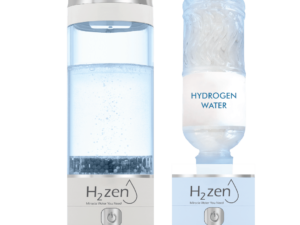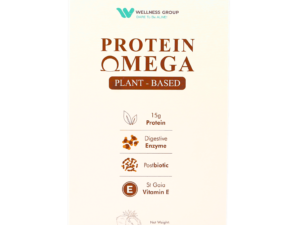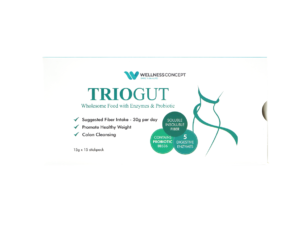Have you ever considered how a single mineral could be the silent powerhouse behind your daily energy and overall vitality?
This essential nutrient plays a critical role in the human system. It is fundamental for producing hemoglobin, a protein in red blood cells. Hemoglobin’s job is to carry life-giving oxygen from the lungs to every tissue and organ.
Without sufficient amounts of this mineral, the body cannot create these vital proteins effectively. This can lead to a common condition known as iron deficiency anemia, impacting well-being.
In Malaysia and across Southeast Asia, this health issue affects many individuals. It touches people from all walks of life, from hardworking adults to developing children.
This is where Wellness Group steps in. As a trusted partner in Malaysia, they specialize in personalized solutions to help clients achieve optimal wellness. Their expert guidance combines smart nutritional strategies and supportive care.
This comprehensive guide will explore the mineral’s role, signs of a shortage, and practical steps for maintaining robust health throughout your life.
Key Takeaways
- Iron is a crucial mineral that the body requires to function correctly.
- Its primary role is to help produce hemoglobin, which carries oxygen in the blood.
- Insufficient iron levels can lead to iron deficiency anemia, a common health concern.
- This condition is prevalent among various groups in Malaysia and Southeast Asia.
- Wellness Group offers expert, personalized solutions to address iron deficiency.
- Their approach includes nutritional guidance and ongoing support for optimal wellness.
- This article will provide a detailed guide on managing and maintaining healthy iron levels.
Understanding Iron for Blood Building
The human system relies on a specific mineral to fuel its most basic functions. This essential nutrient cannot be manufactured internally, making dietary intake crucial.
What is Iron?
Iron represents a fundamental mineral that the human system requires for proper operation. People must obtain it regularly through food or supplements.
This element serves as a building block for critical proteins. Without adequate amounts, the body cannot maintain optimal function.
How Iron Works for Blood Building
The mineral plays a central role in producing hemoglobin within red blood cells. Hemoglobin gives blood its distinctive color and enables it to carry oxygen throughout the system.
Similarly, iron contributes to myoglobin creation in muscle cells. This protein stores oxygen for immediate use during physical exertion.
The process involves incorporating iron atoms into hemoglobin molecules. This creates an efficient oxygen delivery network that sustains life functions.
New red blood cells are constantly generated to replace aging ones. This continuous regeneration demands a steady mineral supply to maintain vitality.
The Science of Iron and Its Role in the Body
Understanding how this mineral functions within our system unlocks insights into maintaining vitality. The concept of elemental iron refers to the pure amount available for use, which differs from the total compound weight in supplements.
Absorption occurs primarily in the small intestine, where the nutrient enters the bloodstream. This complex process makes the element available for hemoglobin production and other essential functions.
| Iron Type | Source | Absorption Rate | Key Characteristics |
|---|---|---|---|
| Heme Iron | Animal products | 15-35% | More efficiently absorbed |
| Non-Heme Iron | Plant sources | 2-20% | Absorption affected by other foods |
| Elemental Iron | Supplements | Varies by form | Pure mineral content available |
The human system stores excess amounts in the liver, spleen, and bone marrow as ferritin. These reserves can be mobilized when dietary intake becomes insufficient.
Beyond its well-known functions, this element supports immune response and cognitive development. It also plays roles in temperature regulation and cellular energy production throughout the system.
The body demonstrates sophisticated management by regulating absorption based on current status. It increases uptake when stores are low and decreases it when adequate.
Both deficiency and overload can lead to serious health conditions. Maintaining balanced levels is crucial for preventing related diseases and promoting overall wellness.
Symptoms and Causes of Iron Deficiency Anemia
Many individuals experience subtle changes in their health that may signal an underlying nutritional imbalance. Recognizing these early warnings can help address the iron deficiency before it becomes more serious.

The initial symptoms often include persistent fatigue that doesn’t improve with rest. People might notice unusual weakness during normal activities.
Recognizing Warning Signs
Physical changes become apparent as the condition progresses. Pale skin, nail beds, and inner eyelids indicate reduced hemoglobin levels.
Cardiovascular symptoms develop as the heart works harder. Chest pain, rapid heartbeat, and shortness of breath signal oxygen deprivation.
Neurological effects include headaches, dizziness, and difficulty concentrating. These result from insufficient oxygen reaching the brain.
| Symptom Category | Common Signs | Underlying Cause | When to Seek Help |
|---|---|---|---|
| Physical Changes | Pale skin, brittle nails | Reduced hemoglobin production | When visible changes persist |
| Cardiovascular | Chest pain, rapid heartbeat | Heart working overtime | With any chest discomfort |
| Neurological | Headaches, dizziness | Low brain oxygen | Affecting daily activities |
| Unusual Indicators | Pica, restless legs | Severe deficiency | Immediately when noticed |
| General Well-being | Fatigue, weakness | Systemic oxygen shortage | When rest doesn’t help |
Several factors can cause this disease. Blood loss from menstruation or digestive issues is common. Absorption problems from certain conditions like celiac disease also contribute.
Some people face higher risk for developing this imbalance. These include menstruating women, frequent blood donors, and individuals with kidney issues.
Medications like NSAIDs can sometimes trigger gastrointestinal bleeding. Surgical procedures affecting the stomach may impair the body‘s ability to absorb nutrients properly.
Exploring Iron Supplements and Their Efficacy
Selecting the right supplement requires understanding different types and their absorption rates. Healthcare professionals often recommend specific formulations based on individual needs and tolerance levels.
Ferrous Sulfate and Other Forms
Ferrous sulfate stands as the most prescribed oral supplement for deficiency treatment. This formulation has decades of clinical evidence supporting its effectiveness.
Other common types include ferrous gluconate and ferrous fumarate. Each contains varying amounts of elemental mineral that the body absorbs differently.
These supplements come in tablets, capsules, or liquid forms. Extended-release options help minimize gastrointestinal discomfort for sensitive individuals.
Administration Guidance
Taking these supplements on an empty stomach maximizes absorption. However, those experiencing stomach upset may benefit from consuming them with a small meal.
Common side effects include constipation, nausea, and dark stools. These are usually temporary and manageable with proper hydration.
Avoid consuming these supplements with dairy, caffeine, or antacids. These can significantly reduce how well the body absorbs the mineral.
Pairing supplements with vitamin C sources enhances absorption. This simple strategy improves the effectiveness of taking iron supplementation.
Most people notice improvement within several weeks of consistently take iron supplements. Full restoration typically requires several months of continued use.
It’s crucial not to consume too much of this mineral without medical supervision. Excessive amounts can accumulate and cause organ damage.
Nutritional Strategies for Optimal Iron Absorption
Eating smart can transform how your body utilizes essential minerals from your meals. While supplements have their place, obtaining nutrients through foods provides additional benefits that pills cannot replicate.
A balanced diet rich in specific foods helps maintain healthy levels. These items fall into two main categories with different absorption rates.
Iron-Rich Foods Overview
Animal sources contain heme varieties that the body absorbs more efficiently. These include lean meat, poultry, seafood, and eggs.
Plant-based options offer non-heme types found in beans, lentils, and green leafy vegetables like spinach. The body processes these differently but they remain valuable.
| Food Category | Examples | Absorption Rate | Enhancement Tips |
|---|---|---|---|
| Heme Sources | Beef, chicken, salmon | 15-35% | Combine with vitamin C foods |
| Non-Heme Sources | Lentils, spinach, fortified cereals | 2-20% | Pair with citrus or peppers |
| Fortified Options | Breakfast cereals, breads | Varies | Check nutrition labels |
Combining different sources creates synergy in meals. Adding meat to bean dishes or seafood with greens boosts how well the body absorbs nutrients.
Vitamin C-rich foods significantly improve absorption from plant sources. Oranges, tomatoes, and peppers make excellent companions to beans and vegetables.
Fortified products offer accessible options for those with dietary restrictions. Many cereals and breads provide additional minerals to help people get enough iron through their diet.
Variety remains key to building healthy cells and maintaining wellness. A colorful plate with multiple sources ensures comprehensive nutritional support.
Special Considerations: Iron Needs in Children, Pregnant Women and More
From pregnancy to childhood development, specific populations have unique nutritional demands that deserve focused care. Certain life stages dramatically increase requirements for essential minerals.

Iron and Pregnancy
During pregnancy, a woman’s system requires nearly double the usual mineral intake. This supports increased blood volume and the growing baby’s development.
Without proper supplementation, many expecting mothers develop iron deficiency. This condition carries serious risk for both mother and child.
Complications can include premature birth and low birth weight. Adequate mineral levels help prevent these outcomes.
Iron for Infants and Children
Young children and infants have critical developmental needs. Their rapidly growing bodies demand sufficient mineral supplies.
Breastfed babies typically need supplementation around four months. Their initial stores become depleted by this age.
Formula-fed infants should receive fortified products. Cow’s milk is not recommended during the first year.
| Population Group | Special Considerations | Recommended Approach |
|---|---|---|
| Pregnant Women | Double mineral requirements | Prenatal vitamins + additional supplements |
| Infants (0-12 months) | Rapid growth phase | Fortified formula or supplementation |
| Young Children | Growth spurts | Iron-rich foods + monitoring |
| Adolescent Girls | Menstruation begins | Increased dietary intake |
Growth spurts in childhood create heightened needs. Parents should watch for signs like pale skin and fatigue.
Early detection and proper nutrition during critical developmental periods can have lifelong benefits for a child’s health and cognitive function.
Regular pediatric check-ups help monitor mineral status. This ensures children receive the support they need during important growth phases.
Wellness Group: Your Trusted Iron Health Partner in Malaysia
When seeking professional guidance for nutritional wellness, Malaysians have a trusted resource in Wellness Group. This premier destination offers comprehensive care that combines evidence-based approaches with personalized attention.
Their services include thorough assessments, personalized protocols, dietary counseling, and ongoing monitoring. This ensures optimal results for each individual’s unique needs.
Wellness Group serves diverse populations with specialized expertise. They help busy professionals, expecting mothers, growing children, and seniors facing absorption challenges.
The team provides flexible consultation options that fit Malaysian lifestyles. Their comprehensive approach includes regular follow-ups and educational support for lasting wellness.
Contact Wellness Group via WhatsApp at +60123822655 for inquiries or appointments. They’re available Monday through Friday from 9:30 am to 6:30 pm, and Saturdays from 10 am to 5 pm.
The knowledgeable team understands local dietary patterns and health challenges. They provide culturally relevant guidance for sustainable results.
Wellness Group’s commitment to ongoing support ensures clients receive continuous care throughout their wellness journey.
Readers are invited to connect with this dedicated team. They offer the professional support needed to address nutritional concerns effectively.
Clinical Insights and Research on Iron Supplementation
Clinical studies have transformed our understanding of mineral supplementation’s role in wellness. Hundreds of well-designed trials demonstrate significant improvements in hemoglobin levels and quality of life for those receiving proper treatment.
Evidence from Leading Studies
Landmark research shows prophylactic supplementation during pregnancy prevents maternal anemia. This approach reduces premature birth risk and improves infant outcomes.
Studies with children reveal that correcting deficiencies improves cognitive function and school performance. Growth rates and immune system strength also show marked improvement.
Recent Findings in Iron Research
Recent investigations compare different supplement formulations for optimal absorption. Research helps healthcare providers personalize treatment approaches for individual needs.
Innovative approaches like fortified foods and weekly regimens offer effective alternatives. Studies confirm that combining supplements with vitamin C enhances absorption significantly.
Safety research emphasizes appropriate dosing and medical supervision. Correcting deficiencies brings benefits beyond anemia, including improved energy and cognitive function.
Practical Tips for Taking Iron Safely
Effective supplementation depends on following specific guidelines for optimal results. Establishing a consistent routine helps the body absorb this essential mineral properly.
People should take their supplement on an empty stomach, ideally one hour before or two hours after meals. This timing maximizes absorption throughout the day. Those experiencing stomach discomfort can take it with a small amount of food.
Avoid consuming dairy, caffeine, or antacids near the time of taking iron. These substances can significantly reduce how much the body absorbs. Space them at least two hours apart for best results.
Pairing supplementation with vitamin C enhances absorption dramatically. A glass of orange juice or citrus fruit makes an excellent companion. This simple strategy improves effectiveness.
Drink plenty of water throughout the day to prevent constipation. Increase fiber in your diet and stay active. Consult a healthcare provider if side effects persist.
Store supplements at room temperature away from children. Consistency is key—taking iron at the same times daily builds steady levels. Follow medical guidance about the proper amount.
Never exceed recommended doses, as too much can cause serious conditions. People with certain diseases should exercise extra caution. Regular follow-up testing ensures treatment works correctly.
Conclusion
Achieving vibrant health is a journey that begins with understanding essential mineral balance. This vital element powers the body’s oxygen delivery system through hemoglobin production in red blood cells. When levels drop too low, people may experience fatigue, pale skin, and shortness of breath.
Addressing this common condition requires a smart approach. Combining iron-rich foods with proper supplementation often delivers the best results. Since everyone’s needs differ based on age, gender, and health status, personalized care makes treatment safer and more effective.
Wellness Group offers comprehensive support for Malaysians seeking optimal wellness. Their team provides evidence-based plans and ongoing monitoring. Contact them via WhatsApp at +60123822655 to begin your journey toward better energy and wellbeing.
With the right support and information, achieving healthy mineral levels and renewed vitality is an entirely achievable goal for everyone.
FAQ
What are some common signs that someone might need to take iron supplements?
People might feel unusually tired, look pale, or experience shortness of breath. These can be warning signs that the body isn’t producing enough healthy red blood cells. It’s always best to see a healthcare provider for a proper diagnosis before starting any new supplement.
How does the body use this mineral to support red blood cells?
This essential nutrient is a key part of hemoglobin, a protein in red blood cells. Hemoglobin’s main job is to carry oxygen from the lungs to all parts of the body. Without enough of this mineral, the body can’t make sufficient hemoglobin, leading to fatigue.
Are there side effects associated with taking iron supplements?
Yes, some individuals may experience stomach upset, constipation, or nausea. To minimize these effects, it’s often suggested to take supplements with a meal. Different forms, like ferrous sulfate or ferrous gluconate, may also be better tolerated by different people.
What foods are good sources of iron for a healthy diet?
A> Excellent sources include red meat, poultry, and fish. For plant-based options, lentils, beans, and spinach are great choices. Pairing these foods with vitamin C-rich options like oranges or bell peppers can help the body absorb the nutrient more effectively.
Why are infants and pregnant women at a higher risk for deficiency?
During pregnancy, a woman’s blood volume increases significantly to support the growing baby, raising the need for this mineral. Infants and young children also need ample amounts for rapid growth and development, making a balanced diet or supplementation crucial during these life stages.
Can you take too much of this mineral?
Absolutely. While rare from diet alone, taking excessive supplements can lead to a condition called iron overload. This can be toxic and damage organs like the liver and heart. It is very important to only take supplements under the guidance of a healthcare professional.






